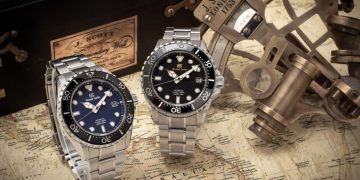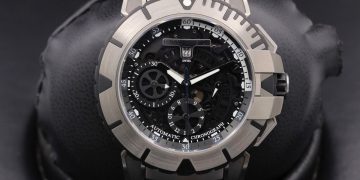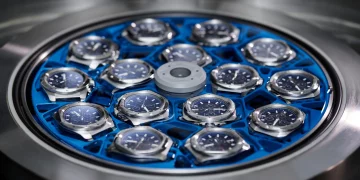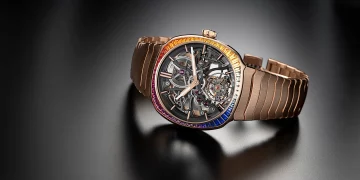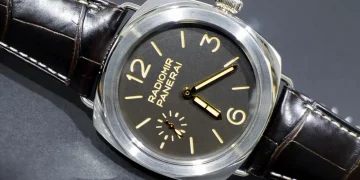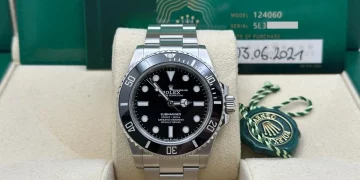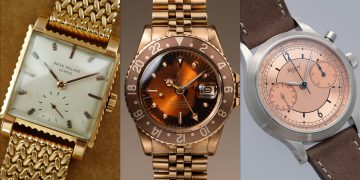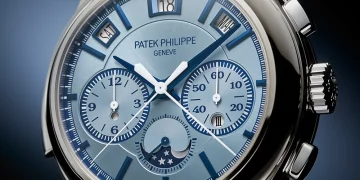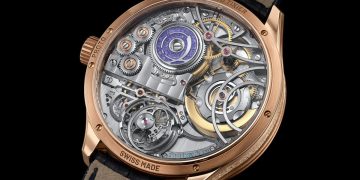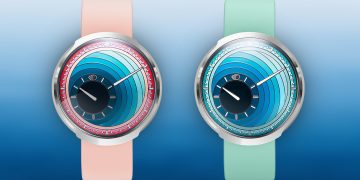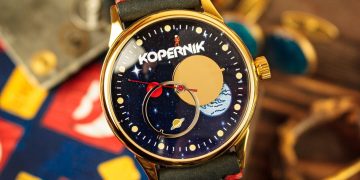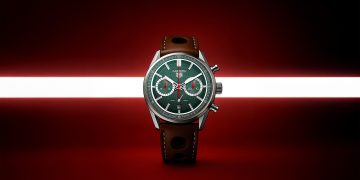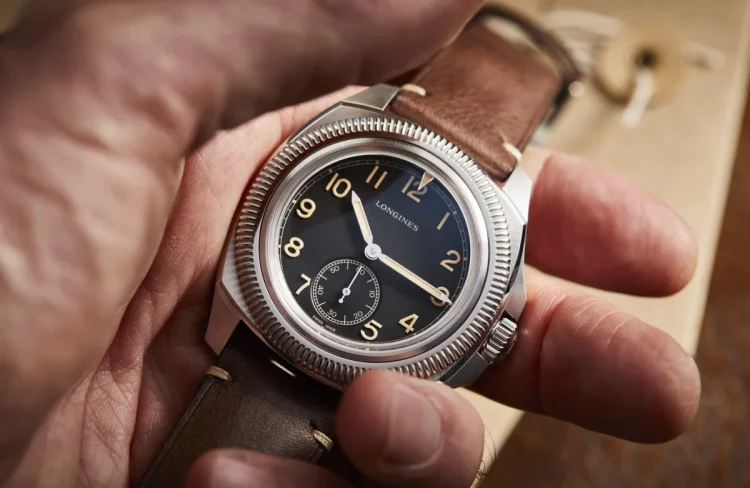Introduction
The world of luxury watches is often perceived as a blend of craftsmanship, elegance, and tradition. However, at the core of this prestigious industry lies cutting-edge technology that drives innovation and ensures precision, performance, and durability. Two of the most iconic names in the luxury watchmaking world—Tag Heuer and Longines—have consistently pushed the boundaries of what is possible in horology. These two Swiss powerhouses, while distinct in their histories and approaches, have continuously integrated advanced technology into their timepieces, creating watches that not only reflect traditional Swiss watchmaking expertise but also embrace modern innovation.
In this article, we will explore the technological advancements, movements, materials, and design philosophies employed by both Tag Heuer and Longines. By delving into the intricacies of their watchmaking processes, we aim to uncover how these brands balance technological innovation with artistry and craftsmanship. Whether it’s through groundbreaking chronographs, innovative movements, or the use of high-tech materials, both brands have remained at the forefront of horological advancements. By the end of this article, you will have a thorough understanding of how Tag Heuer and Longines have revolutionized the watchmaking industry, setting the stage for the next generation of timekeeping technology.
Chapter 1: Tag Heuer – A Legacy of Innovation and Precision
1.1 The Tag Heuer Philosophy: Merging Innovation with Tradition
Founded in 1860 by Edouard Heuer in St-Imier, Switzerland, Tag Heuer has always positioned itself as a brand dedicated to precision, innovation, and performance. From its early days, the company was deeply involved in the development of chronograph movements, which were crucial for accurate timekeeping in sports events, particularly motorsports. The brand’s focus on technology was evident as early as 1887, when Heuer patented the oscillating pinion, a mechanism that revolutionized chronograph design and is still in use in modern mechanical chronographs today.
Tag Heuer has always sought to combine Swiss watchmaking heritage with a forward-thinking approach to technology. The brand’s collaborations with top athletes, race car drivers, and engineers have allowed it to create timepieces that not only reflect technical excellence but also meet the demands of high-performance environments.
1.2 Key Technological Milestones in Tag Heuer’s History
Tag Heuer’s journey in horological innovation can be traced through its groundbreaking technological achievements. Here are some of the most notable developments:
- The Oscillating Pinion (1887): This invention by Edouard Heuer became a cornerstone of mechanical chronograph design. The oscillating pinion ensured smoother, more reliable activation of chronograph functions, a technology still used in modern chronographs.
- The Mikrograph (1916): Tag Heuer was the first to develop a high-frequency chronograph, capable of measuring time to the 1/100th of a second. This technology laid the foundation for future advancements in precise sports timing.
- The Monaco (1969): As one of the first automatic chronographs, the Monaco was an iconic piece in watch history. It housed the Caliber 11 movement, one of the first automatic chronograph movements, revolutionizing the industry. The Monaco also became famous after Steve McQueen wore it in the film Le Mans.
- The TAG Heuer Monaco V4 (2004): This watch was a true technological marvel, as it utilized a belt-driven movement instead of the traditional gear system. The V4 was the first-ever watch to use linear mass drives, an innovation that further pushed the boundaries of mechanical watchmaking.
- The Connected Watch (2015): Tag Heuer entered the world of smartwatches with the release of its Connected line. The brand partnered with Intel and Google to create a luxury smartwatch that offered the connectivity of a traditional smartwatch while maintaining the craftsmanship and aesthetic appeal of a traditional timepiece.
1.3 Movements and Technical Excellence
Tag Heuer has long been known for its precision chronograph movements, but the brand has also made strides in mechanical movements that push the limits of technology. Notable movements include:
- Caliber 1887: This is one of Tag Heuer’s most famous in-house movements, known for its accuracy, reliability, and robustness. The movement is an evolution of the Oscillating Pinion system and is used in several of the brand’s chronograph models.
- Caliber 16: Found in the Carrera and Formula 1 collections, this automatic chronograph movement is a workhorse of Tag Heuer’s offerings. It provides excellent accuracy and is widely appreciated by watch enthusiasts.
- Caliber 360: This ultra-high-frequency movement is capable of measuring 1/100th of a second. It’s a key example of Tag Heuer’s focus on high-performance precision, which is particularly important for racing and sports timing.
- Caliber 6: Used in the Tag Heuer Aquaracer, this movement is known for its robustness and reliability, even under extreme conditions like diving. It exemplifies Tag Heuer’s commitment to water-resistant technology.
1.4 Material Innovations in Tag Heuer Watches
Tag Heuer has made several advancements in the use of high-tech materials. These materials not only enhance the performance of the watches but also contribute to their overall durability and aesthetics:
- Ceramic: Tag Heuer has extensively used ceramic in its watch bezels and cases. This material is highly scratch-resistant, lightweight, and maintains its finish over time. Ceramic is particularly popular in the Formula 1 and Monaco collections.
- Titanium: Tag Heuer has embraced titanium for its lightweight, high-durability properties. Watches made from titanium are corrosion-resistant, hypoallergenic, and much lighter than stainless steel counterparts.
- Carbon Fiber: Used primarily in the Carrera and Monaco collections, carbon fiber allows for extremely lightweight yet durable watch components, perfect for performance-oriented models.
1.5 Smartwatches: Bridging the Gap Between Tradition and Technology
In 2015, Tag Heuer entered the world of smartwatches with the Tag Heuer Connected watch. The brand partnered with Intel and Google to create a high-end smartwatch that blended modern technology with traditional Swiss watchmaking aesthetics. The Tag Heuer Connected features:
- Wear OS by Google: The watch is powered by Google’s operating system, providing all the features of a modern smartwatch, including fitness tracking, notifications, and voice commands.
- Luxury Design: Despite being a smartwatch, the Connected series retains the look and feel of a luxury Tag Heuer timepiece, with options for customization, high-quality materials, and precision craftsmanship.
- Interchangeable Straps: Users can choose from a range of strap options, including leather and metal, allowing them to tailor the watch to their personal style.
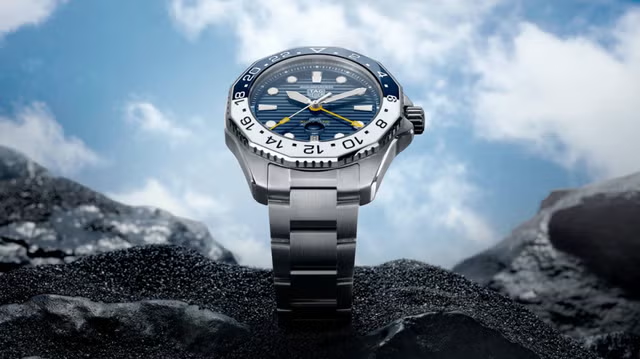
Chapter 2: Longines – Tradition Meets Technological Excellence
2.1 The Longines Philosophy: Crafting Watches with Precision and Elegance
Founded in 1832 by Auguste Agassiz, Longines has built its reputation as one of the most respected watchmakers in the world. The brand is known for blending Swiss tradition with modern technology, producing watches that are both elegant and functional. Longines has historically been a leader in the fields of sports timing, aviation, and horological precision. The brand’s commitment to innovation is evident in its use of advanced movements and materials, while maintaining a focus on elegance and classic watchmaking.
2.2 Key Technological Advancements in Longines’ History
Longines has made several significant contributions to the world of horology, particularly in the areas of precision timing and mechanical watchmaking. Some of its most important innovations include:
- The First Chronograph (1878): Longines created the first-ever chronograph with a central seconds hand, marking a significant step forward in sports and aviation timing.
- High-Precision Watches (1920s): Longines’ watches were used in high-precision sports events, including the Olympic Games and air races, where accuracy was paramount.
- The Longines Master Collection: This collection showcases Longines’ commitment to automatic movements and complicated watches. It includes models with moonphase and chronograph complications, allowing Longines to demonstrate its technical prowess.
2.3 Movements and Technical Advancements
Longines uses a mix of in-house and Swiss-made movements in its timepieces. These movements are known for their reliability, accuracy, and value for money. Some of the most noteworthy movements include:
- L888.2: This movement is used in several Longines models, including the Master Collection. It features a power reserve of 64 hours, making it a reliable choice for those who prefer a longer-lasting mechanical movement.
- L636.6: Found in the Longines Conquest collection, this movement is known for its precision and chronometer certification. The Conquest models are particularly popular among diving enthusiasts due to their robust and precise mechanics.
- L619.2: This automatic movement is used in the Longines Symphonette collection. It is a great example of Longines’ ability to combine technical sophistication with a classic design.
- Quartz Movements: While Longines is known for its mechanical prowess, it also offers several high-quality quartz models, providing precision and reliability for those who seek more affordable options.
2.4 Material Innovation and Durability
Longines, like Tag Heuer, has embraced modern materials to improve the performance, comfort, and durability of its watches. Some of the key materials used in Longines watches include:
- Ceramic: Longines uses ceramic in various models, particularly in its Conquest line, to create scratch-resistant bezels and cases. Ceramic is also highly resistant to fading, making it a durable and long-lasting material.
- Stainless Steel: The brand often uses high-grade 316L stainless steel in its case construction, ensuring watches remain resistant to scratches and corrosion over time.
- Titanium: Longines has also incorporated titanium into its offerings, especially in sportier models like the Conquest V.H.P. series. Titanium’s light weight and durability make it ideal for watches that need to withstand harsh conditions.
- Sapphire Crystal: Longines consistently uses sapphire crystal in its watches to enhance durability and scratch resistance. The use of sapphire ensures that the watches maintain their clarity and aesthetic appeal even after years of use.
2.5 Longines and Smartwatch Technology
While Longines has focused more on traditional watchmaking, it has also made strides in smartwatch technology in recent years. The brand has explored the smartwatch market with models such as the Longines Conquest V.H.P. (Very High Precision) series, which features:
- Quartz Movements with High Precision: The Conquest V.H.P. series utilizes ultra-precise quartz movements that can achieve a precision of ±5 seconds per year, far exceeding the standards of most traditional quartz watches.
- Bluetooth Connectivity: Some models in the Conquest V.H.P. line offer Bluetooth connectivity, allowing users to synchronize their watches with a smartphone to ensure accurate timekeeping even when crossing time zones.
Chapter 3: Comparing the Technological Approaches of Tag Heuer and Longines
3.1 Innovation in Chronographs
- Tag Heuer has been synonymous with chronograph technology, creating some of the most advanced and accurate chronograph movements in the industry, such as the Mikrograph and the Caliber 360.
- Longines, while not as renowned for its chronographs, has certainly contributed to the field with innovations such as the First Chronograph and chronometer-certified movements found in its Conquest and Master Collection.
3.2 Material Technology
Both brands embrace advanced materials like ceramic, titanium, and carbon fiber to enhance their watches’ durability, aesthetics, and performance. However, Tag Heuer has perhaps been more aggressive in its use of exotic materials, particularly in Formula 1 models, while Longines tends to stick with more traditional but equally durable materials like stainless steel and ceramic.
3.3 Smartwatches vs. Mechanical Movements
- Tag Heuer is a clear pioneer in the smartwatch space with its Connected series, merging traditional Swiss craftsmanship with modern smartwatch technology. It has embraced the digital revolution, offering an integrated experience that appeals to tech-savvy consumers.
- Longines, on the other hand, has stayed more focused on mechanical excellence but has explored limited smartwatch features with the Conquest V.H.P. series, offering high precision and Bluetooth connectivity.
Conclusion
Both Tag Heuer and Longines are titans in the world of luxury watchmaking, with each brand carving its own niche in the horological landscape. While Tag Heuer has made its mark with high-performance chronographs, avant-garde materials, and a foray into smartwatches, Longines has maintained its reputation for elegance, precision, and traditional Swiss craftsmanship, embracing high-precision quartz and advanced chronometer technology.
Ultimately, the choice between the two brands comes down to personal preference. Tag Heuer appeals to those seeking boldness, performance, and technological innovation, while Longines attracts enthusiasts who value classic design, timeless elegance, and mechanical craftsmanship. Both brands, however, continue to push the boundaries of watchmaking technology, ensuring that the future of horology remains bright and ever-evolving.


